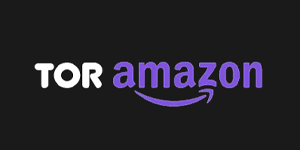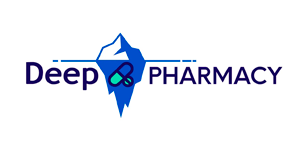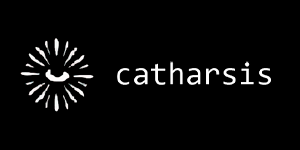Last Updated on May 14, 2025 by DarkNet
In today’s digitally interconnected world, protecting sensitive business data is more critical—and more challenging—than ever before. The dark web, a hidden portion of the internet inaccessible by conventional browsers and search engines, has increasingly become a marketplace for cybercriminals selling stolen data. Businesses that fail to monitor the dark web risk overlooking critical breaches, allowing compromised information to circulate unchecked, potentially leading to devastating financial losses, damaged reputations, and regulatory penalties.
Corporate dark-web monitoring has emerged as an essential practice for proactive cybersecurity. By continuously scanning the dark web, organizations can swiftly identify data leaks—often before significant harm occurs—and respond decisively to mitigate damage. This guide provides businesses with clear, actionable steps to implement an effective dark-web monitoring strategy, enabling timely detection and response to threats, protecting corporate assets, and ensuring sustained trust among customers, partners, and stakeholders.
Understanding the Dark Web and Its Risks
The dark web refers to a hidden segment of the internet that is intentionally concealed from standard search engines and web browsers. Unlike the publicly accessible internet (“surface web”), the dark web requires specialized tools, such as the Tor browser, to gain entry. Its encrypted nature provides anonymity, making it an attractive environment for criminal activity—including illicit transactions, hacking forums, and the buying and selling of stolen information.
One of the primary uses of the dark web is trading stolen or compromised data, ranging from credit card information and login credentials to intellectual property and confidential business records. Cybercriminals frequently offer these stolen digital assets through specialized marketplaces and forums, where buyers can anonymously acquire and misuse this information, often leading to identity theft, corporate espionage, or financial fraud.
Businesses face considerable risks when their sensitive information is leaked to the dark web. Financial damages can be substantial, stemming from fraudulent transactions, legal fines, and the costs associated with breach response and remediation. Equally serious is the potential reputational damage—loss of customer trust and decreased competitive advantage can have lasting consequences. Furthermore, compromised intellectual property or trade secrets may directly undermine business strategies and weaken market position.
Without proactive dark-web monitoring, businesses risk remaining unaware of critical data leaks until after substantial damage has occurred. Early detection through consistent surveillance of dark-web channels allows companies to respond swiftly, minimizing harm and protecting organizational integrity.
Why Corporate Dark-Web Monitoring is Essential
Corporate dark-web monitoring has become an indispensable element of modern cybersecurity strategy. Proactively monitoring the dark web allows businesses to detect potential data breaches early—often before any significant harm occurs—enabling timely intervention to protect assets, customers, and reputation.
One of the primary reasons proactive monitoring is crucial is the sheer speed at which stolen data can circulate and cause damage. Cybercriminals frequently sell sensitive business information, such as login credentials, customer records, or proprietary data, immediately after obtaining it. Without ongoing surveillance, an organization might discover a data breach only after customers report unauthorized charges, sensitive information surfaces publicly, or regulatory bodies initiate investigations—often far too late for effective damage control.
Real-world examples highlight the value of proactive dark-web monitoring. For instance, a leading financial institution recently prevented a major breach from escalating by promptly identifying stolen employee credentials being offered on a dark-web marketplace. Because the breach was detected swiftly, the company immediately disabled affected accounts, reinforced security protocols, and avoided potentially massive financial losses and regulatory scrutiny.
In another case, a global technology firm leveraged dark-web monitoring to discover sensitive intellectual property that had appeared for sale in hacker forums. Quick identification of this leak allowed the company to tighten security around compromised systems, avert a competitor from acquiring critical trade secrets, and preserve its competitive advantage.
For business executives, the strategic imperative is clear: the modest investment required for dark-web monitoring tools and processes significantly outweighs the costs and risks associated with a major, undetected breach. Effective monitoring not only safeguards sensitive data but also demonstrates to customers, partners, and stakeholders that the organization prioritizes cybersecurity, trust, and proactive risk management.
Tools and Techniques for Dark Web Monitoring
Effective dark-web monitoring requires leveraging specialized tools and technologies designed specifically for scanning, tracking, and analyzing hidden digital environments. The right solution empowers organizations to swiftly detect potential breaches, identify leaked data, and mitigate risks before damage occurs. Below, we explore some of today’s most reputable dark-web monitoring platforms, along with essential features businesses should consider when choosing the right tool.
Leading Dark-Web Monitoring Solutions
- DarkOwl: Known for its extensive data coverage, DarkOwl provides continuous, comprehensive visibility into dark-web marketplaces, forums, and chatrooms. The platform excels in real-time scanning, indexing billions of pages for compromised data, credential leaks, and confidential documents. DarkOwl also offers customizable alerts and actionable threat intelligence reports, facilitating swift response.
- Recorded Future: This solution integrates advanced threat intelligence with robust dark-web monitoring capabilities. Recorded Future leverages AI-driven analytics to detect leaked data quickly, correlating it with broader threat insights. The platform delivers predictive intelligence, real-time alerts, and contextual data analysis, enabling proactive risk mitigation and strategic decision-making.
- Flashpoint: Specializing in deep and dark-web intelligence, Flashpoint provides comprehensive visibility into illicit online communities. Its platform helps businesses uncover threats related to leaked credentials, insider threats, and emerging cybercriminal tactics. Flashpoint offers detailed intelligence reports, early warning indicators, and intuitive dashboards that simplify interpreting complex threat data.
- Digital Shadows SearchLight: Offering continuous monitoring across various dark-web sources, Digital Shadows excels in detecting and tracking leaked corporate information. It features real-time alerts, data breach monitoring, and detailed risk assessments, assisting organizations in rapid response and remediation efforts.
Key Features to Look For
When evaluating dark-web monitoring solutions, businesses should prioritize these critical capabilities:
- Comprehensive Coverage: Ensure the tool monitors a broad range of dark-web channels, including forums, marketplaces, private chats, and paste sites.
- Real-Time Alerts: Choose solutions that provide instant notifications of relevant data leaks, enabling rapid response to potential breaches.
- Customizable Intelligence: Opt for platforms that can tailor threat intelligence reports and alerts specifically to your organization’s needs, industry, and risk profile.
- User-Friendly Interface: An intuitive dashboard simplifies threat detection and assessment, reducing the complexity of interpreting intelligence data.
- Integration Capabilities: Look for solutions that integrate seamlessly with your existing cybersecurity infrastructure, such as SIEM (Security Information and Event Management) systems or incident response platforms.
- Historical Data and Trend Analysis: Select platforms that offer insights into historical leak data and threat patterns, aiding in predictive security measures and long-term strategic planning.
Choosing the Right Dark-Web Monitoring Solution
Selecting an appropriate monitoring tool depends on your organization’s unique needs, size, industry, and risk profile. Smaller organizations might prioritize ease-of-use and affordability, while larger enterprises could focus on comprehensive integrations, customization options, and advanced analytics.
Start by clearly identifying your specific monitoring objectives—whether that’s safeguarding customer data, protecting intellectual property, or staying compliant with industry regulations. Next, engage with multiple solution providers to conduct demos, evaluate interfaces, and understand reporting capabilities. Finally, choose a provider that not only meets your current needs but also offers scalable solutions capable of adapting to future cybersecurity challenges.
By carefully selecting and effectively utilizing a robust dark-web monitoring platform, businesses can significantly enhance their cybersecurity posture and effectively manage digital risks, ensuring the continued security of critical corporate data.
Step-by-Step Guide: How to Set Up Dark-Web Monitoring
Implementing effective dark-web monitoring is crucial for proactively detecting and mitigating data breaches. Follow these structured steps to set up a robust and efficient monitoring system tailored to your organization’s needs.
Step 1: Identify Your Monitoring Goals and Priorities
Begin by clearly defining the scope and goals of your monitoring efforts:
- Determine the specific types of data you must protect (e.g., customer information, financial records, intellectual property).
- Assess your industry-specific threats and compliance obligations.
- Establish priorities based on potential risks and business impact (e.g., high-priority targets might include executive credentials or sensitive client data).
Step 2: Choose the Appropriate Dark-Web Monitoring Tool
Select a monitoring solution aligned with your goals and organizational structure:
- Compare leading monitoring platforms such as DarkOwl, Recorded Future, Flashpoint, or Digital Shadows.
- Evaluate features based on coverage, customization, real-time alerts, integration capability, and budget.
- Conduct demos with shortlisted providers to test usability, dashboard functionality, and quality of threat intelligence reports.
Step 3: Configure and Customize the Monitoring Platform
Once you’ve selected a solution, configure it to align precisely with your monitoring requirements:
- Input keywords, domains, email addresses, IP addresses, and other identifiers related to your company’s sensitive assets.
- Fine-tune data collection settings, ensuring targeted monitoring of relevant dark-web marketplaces, forums, chatrooms, and paste sites.
- Establish clear criteria for monitoring and categorizing threats, allowing precise and relevant detection.
Step 4: Automate the Monitoring Process
Automation reduces manual effort and ensures continuous coverage:
- Enable automated scanning schedules to provide round-the-clock monitoring.
- Integrate your chosen monitoring tool with existing security infrastructure (such as SIEM platforms or incident management systems) to streamline workflows.
- Regularly verify that automation scripts or processes run smoothly and consistently, minimizing gaps in monitoring coverage.
Step 5: Set Up Real-Time Alerts and Notifications
Timely alerts are critical to rapid incident response:
- Configure immediate alerts triggered by specific criteria (e.g., credentials or confidential documents appearing on dark-web forums).
- Establish multiple notification channels—such as email, SMS, or integration with internal messaging apps like Slack or Microsoft Teams—to promptly reach appropriate personnel.
- Assign clearly defined responsibilities for managing and responding to these alerts, specifying escalation paths if necessary.
Step 6: Regularly Review and Update Your Monitoring System
Continuous review and adaptation are essential:
- Schedule regular (monthly or quarterly) assessments of monitoring effectiveness, alert accuracy, and coverage scope.
- Update monitored assets and keywords to reflect any changes in your business operations, data usage, or security landscape.
- Analyze monitoring data periodically to identify trends and proactively adjust your cybersecurity strategies.
By following these practical steps, your organization will establish a powerful, proactive dark-web monitoring system capable of identifying potential threats early, minimizing damage, and protecting your most sensitive business data.
Identifying and Assessing Data Leaks
Effectively managing data leaks begins with accurately identifying compromised information and quickly assessing the potential impact. The following practical guidelines outline how businesses can pinpoint breaches and determine their severity and urgency.
Step 1: Confirm and Verify Compromised Data
When alerted to a possible data leak, immediately verify the authenticity and relevance of the compromised information:
- Examine Source Credibility:
Evaluate the reliability of the dark-web source. Established forums or marketplaces often indicate a genuine leak, while less credible sources require deeper scrutiny. - Cross-Check with Internal Records:
Compare leaked information, such as email addresses, passwords, or account numbers, with your internal databases to confirm its authenticity. - Engage External Expertise if Necessary:
If verification is challenging, consider consulting cybersecurity experts or forensic specialists who can accurately validate the compromised data.
Step 2: Categorize the Type of Leaked Data
Clearly classifying compromised data helps determine potential impact:
- Personally Identifiable Information (PII): Includes names, addresses, Social Security numbers, and phone numbers.
- Financial Information: Includes credit card details, bank account numbers, and payment processing information.
- Corporate Credentials: Username/password combinations, API keys, or administrative logins.
- Intellectual Property: Confidential product designs, source code, patents, or trade secrets.
Clearly documenting the type and volume of leaked information allows for precise assessment and response.
Step 3: Assess the Severity and Potential Impact
Evaluate the potential consequences of the leak by considering:
- Scale and Scope:
Determine how many individuals or corporate accounts are impacted. A large-scale leak often necessitates immediate and extensive remediation. - Data Sensitivity:
Evaluate the confidentiality and strategic value of leaked data. Compromise of highly sensitive data (such as financial records or trade secrets) demands rapid escalation and action. - Potential Financial and Legal Exposure:
Identify potential regulatory penalties, compliance violations, or direct financial losses. Higher legal risks necessitate immediate legal and compliance department involvement. - Risk to Reputation and Trust:
Consider how news of the leak might affect customer trust, brand reputation, and stakeholder confidence.
Step 4: Determine the Urgency of Response
Classify leaks based on urgency to prioritize your response effectively:
- High Urgency:
Immediate action required if sensitive customer data, financial information, or high-value intellectual property is leaked. - Medium Urgency:
Timely action needed if corporate credentials or internal documentation with moderate sensitivity are compromised. - Low Urgency:
Ongoing monitoring and routine response if leaked information is publicly available or minimally sensitive.
Prioritizing responses ensures efficient resource allocation and swift containment of high-risk incidents.
Step 5: Document and Communicate Findings Clearly
Create a detailed incident report capturing your findings:
- Clearly document the nature, scope, and assessed severity of the leak.
- Communicate promptly with relevant stakeholders, including senior management, IT security teams, compliance officers, and legal advisors.
- Establish clear, factual communication to affected parties if necessary, including clients, employees, or regulatory authorities.
By systematically following these actionable steps, your business can swiftly identify, assess, and prioritize responses to data leaks—significantly reducing potential damage and safeguarding your organization’s reputation and assets.
Responding Effectively to Detected Leaks
When your business detects a data leak on the dark web, an immediate and structured response is essential to mitigate damage, maintain stakeholder confidence, and meet compliance obligations. Follow these practical, actionable steps to respond effectively and protect your organization.
Step 1: Activate Your Incident Response Team
Upon confirming a data leak, swiftly mobilize your established incident response team:
- Include representatives from cybersecurity, IT, legal, compliance, communications, and executive management.
- Assign a dedicated incident manager to coordinate the response and maintain clear communication between departments.
- Ensure all team members clearly understand their roles and responsibilities to facilitate smooth coordination.
Step 2: Contain and Mitigate the Immediate Threat
Quickly take steps to limit further harm from the leak:
- Reset Compromised Credentials:
Immediately disable or reset affected user accounts, passwords, and access keys. - Enhance Security Controls:
Temporarily tighten security protocols, implement additional authentication measures, and increase monitoring of sensitive data repositories. - Limit Data Exposure:
If possible, directly communicate with dark-web platform administrators or cybersecurity providers to attempt removal or limitation of leaked data.
Step 3: Notify Relevant Stakeholders and Authorities
Transparency and proactive communication are crucial during a data breach:
- Internal Notifications:
Brief executives, board members, and relevant teams immediately to ensure consistent and informed internal communications. - External Notifications:
Inform impacted customers, partners, vendors, or regulatory bodies as required by applicable laws or industry regulations. Clearly state the nature of the breach, the potential impact, and actions taken. - Regulatory Reporting:
Fulfill mandatory reporting requirements under data protection and privacy regulations such as GDPR, HIPAA, or CCPA to avoid regulatory penalties.
Step 4: Launch a Detailed Investigation
Conduct a thorough forensic analysis to fully understand the incident:
- Identify the origin, extent, and method of the breach.
- Determine precisely how sensitive data was accessed and leaked.
- Document findings meticulously to aid future prevention efforts, internal audits, and regulatory investigations.
Step 5: Communicate Clearly and Transparently
Maintain trust and credibility through clear, honest, and consistent communication:
- Provide regular updates to stakeholders regarding investigation progress, remediation steps, and preventive actions.
- Appoint a single, authoritative spokesperson to manage external communications effectively.
- Demonstrate accountability and reassure customers by transparently explaining measures undertaken to address the leak and protect data moving forward.
Step 6: Remediate Vulnerabilities and Implement Preventive Measures
Use insights from the incident investigation to strengthen defenses:
- Patch security vulnerabilities that led to the leak.
- Upgrade existing cybersecurity systems and protocols.
- Conduct targeted employee training to prevent similar incidents in the future.
Examples of Successful Data Leak Response Plans
- Case Example 1: Financial Institution Breach After identifying compromised login credentials on a dark-web forum, a major financial institution immediately reset affected employee accounts, notified regulatory authorities, and proactively communicated with customers. They publicly shared detailed steps they were taking, including enhanced security measures, which preserved customer trust and mitigated further damage.
- Case Example 2: Technology Company IP Leak A global technology firm swiftly reacted when intellectual property appeared for sale online by immediately conducting a forensic investigation, tightening internal security protocols, and coordinating with law enforcement. Transparent communication with investors and clear messaging about preventive steps maintained market confidence and minimized reputational harm.
By adopting a structured, decisive, and transparent approach to data leak response, your business can effectively mitigate the impact, uphold stakeholder confidence, and safeguard its long-term integrity and reputation.
Best Practices for Preventing Future Leaks
Protecting your business against data breaches requires proactive, consistent measures that minimize vulnerabilities and strengthen organizational resilience. Implement these clear, practical best practices to significantly reduce the risk of future data leaks:
1. Prioritize Employee Cybersecurity Training
Employees are often the first line of defense against cyber threats:
- Conduct regular, interactive cybersecurity training to educate employees about recognizing and responding to threats like phishing attacks, malware, and social engineering.
- Clearly communicate security policies and procedures, reinforcing them regularly through internal communications and refresher sessions.
- Foster a culture where employees feel encouraged to promptly report suspicious activities or potential security breaches.
2. Implement Strong Access Controls
Ensure sensitive data is protected through strict access management:
- Adopt the principle of least privilege—employees should only have access to data and systems essential for their role.
- Regularly review and update access permissions, promptly revoking accounts or privileges of former employees or those who change roles.
- Utilize multi-factor authentication (MFA) across critical systems to prevent unauthorized access from compromised credentials.
3. Establish Regular Security Audits and Penetration Testing
Continuously assess your cybersecurity posture to uncover hidden vulnerabilities:
- Schedule regular security audits and penetration tests to proactively identify and address weaknesses before they are exploited.
- Promptly remediate vulnerabilities identified during audits, documenting actions clearly for accountability and future reference.
4. Maintain Robust Data Encryption
Protect data confidentiality and integrity by enforcing comprehensive encryption:
- Encrypt sensitive data both at rest and in transit, using industry-standard encryption methods.
- Regularly review encryption practices to ensure they meet evolving industry and regulatory standards.
5. Develop and Regularly Update Incident Response Plans
Preparedness is key to minimizing damage:
- Establish clear, comprehensive incident response plans that outline roles, responsibilities, and procedures for rapid response.
- Regularly test these plans through simulated exercises, ensuring readiness and continuous improvement.
6. Invest in Continuous Monitoring and Threat Intelligence
Stay ahead of threats by maintaining visibility into emerging cybersecurity risks:
- Deploy advanced monitoring tools, such as dark-web monitoring solutions, endpoint detection, and threat intelligence platforms.
- Regularly update your threat intelligence databases and integrate findings into your cybersecurity strategy.
By consistently implementing these best practices, your organization can significantly reduce the risk of future data breaches, safeguarding your assets, reputation, and stakeholder trust.
Legal and Ethical Considerations in Dark-Web Monitoring
While dark-web monitoring is crucial for protecting corporate data, it must be conducted carefully and ethically to ensure compliance with legal obligations and respect for individual privacy. Businesses engaging in dark-web monitoring must clearly understand and follow specific legal requirements and ethical guidelines to conduct their surveillance responsibly.
Legal Requirements and Compliance
Organizations must navigate various laws and regulations when performing dark-web monitoring:
- Data Protection and Privacy Laws:
Comply with applicable privacy regulations, such as the General Data Protection Regulation (GDPR), the California Consumer Privacy Act (CCPA), or industry-specific laws like the Health Insurance Portability and Accountability Act (HIPAA). Ensure monitoring practices respect data-subject rights, including transparency about how personal data is handled and protected. - Employee Privacy Regulations:
Clearly disclose monitoring practices within your employee privacy policies. Inform employees about the extent and methods of any monitoring conducted—particularly regarding company-owned devices or corporate email accounts. Non-disclosed or excessively invasive monitoring can lead to legal challenges. - Cybersecurity Regulations and Reporting:
Stay informed about your obligations to report data breaches or security incidents to regulatory bodies. Failure to comply with reporting requirements can lead to significant legal and financial penalties.
Ethical Guidelines for Responsible Monitoring
Beyond legal compliance, businesses must uphold strong ethical standards to maintain stakeholder trust and organizational integrity:
- Transparency and Openness:
Clearly communicate your company’s monitoring policies and practices to all stakeholders—including employees, partners, and customers. Transparency builds trust and prevents misunderstandings about the purpose and scope of surveillance efforts. - Minimization of Privacy Intrusion:
Limit dark-web monitoring to explicitly defined goals, avoiding unnecessary or excessively broad surveillance that may compromise personal privacy. Collect and retain only the information essential for security objectives. - Respect for Employee Confidentiality:
Ensure that dark-web monitoring processes distinguish between corporate data and employees’ private communications and personal activities. Clearly define boundaries to avoid violating legitimate expectations of employee privacy. - Responsible Use of Collected Data:
Clearly document and justify how the information obtained through monitoring will be used, stored, and protected. Implement robust safeguards and restrict access to sensitive monitoring data strictly to authorized personnel. - Accountability and Oversight:
Establish oversight mechanisms and periodic reviews to ensure monitoring practices consistently adhere to both legal requirements and ethical standards. Regular audits and reporting provide transparency and accountability within your organization.
By carefully adhering to these legal requirements and ethical considerations, businesses can responsibly implement dark-web monitoring strategies that protect corporate assets, maintain regulatory compliance, respect individual privacy, and uphold organizational trust.
Conclusion: Safeguarding Your Business Through Continuous Monitoring
In today’s increasingly interconnected digital landscape, proactive dark-web monitoring is no longer optional—it is a business imperative. As we’ve explored, businesses face substantial risks from undetected data leaks, including financial losses, legal liabilities, reputational damage, and diminished customer trust. By understanding these risks, utilizing robust monitoring tools, and swiftly identifying and responding to breaches, your organization can significantly reduce its vulnerability.
Effective dark-web monitoring requires clear strategic planning, proper implementation of specialized tools, and ongoing commitment. Regular employee training, continuous system updates, adherence to legal and ethical standards, and transparent communication are crucial to maintaining a secure environment. Ultimately, organizations that embrace continuous monitoring as a core component of their cybersecurity strategy not only protect their assets and stakeholders but also gain a competitive advantage through increased trust and operational resilience.
Adopt proactive dark-web monitoring today—it’s one of the most valuable investments your business can make to safeguard its future.













